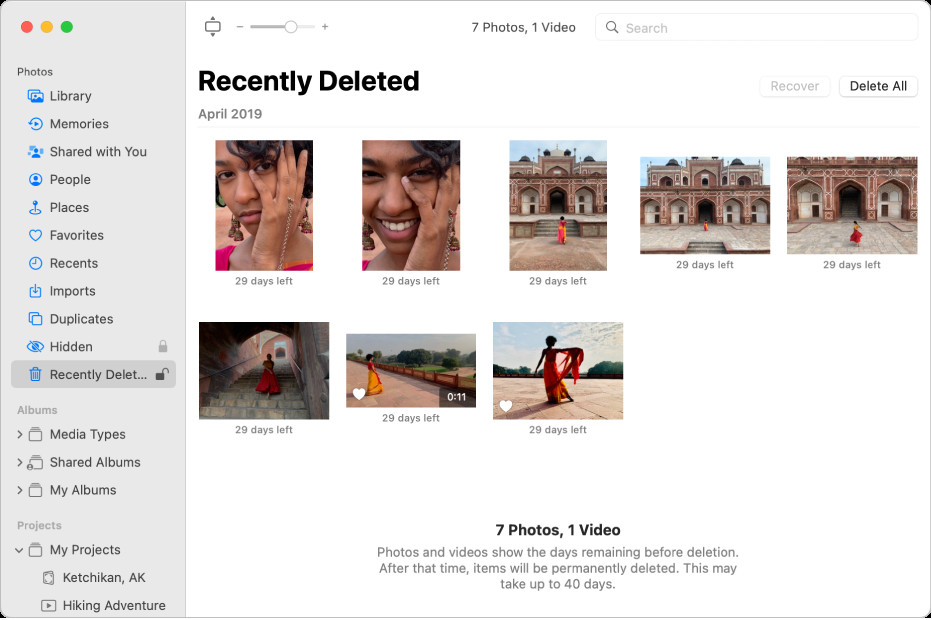Accidentally deleting precious photos is a common digital mishap. Whether it’s a cherished family moment, an unforgettable vacation snapshot, or important professional images, the panic that sets in when you realize a photo is gone can be significant. Fortunately, recovering deleted photos is often possible, especially if you act quickly. This guide will walk you through the steps to recover your photos, focusing on methods for Apple devices and iCloud, ensuring you can retrieve those valuable memories.
Recovering Photos from iCloud.com
iCloud Photos is a fantastic service for Apple users, automatically syncing your photo library across all your devices. This also means that when you delete a photo on one device, it’s deleted everywhere. However, Apple provides a grace period for accidental deletions. Here’s how to recover photos using iCloud.com:
-
Access iCloud Photos: Open your web browser and navigate to iCloud.com. Log in using your Apple ID and password.
-
Go to Photos: Once logged in, click on the “Photos” icon. This will take you to your iCloud Photos library in the browser.
-
Locate the Recently Deleted Album: In the Photos app on iCloud.com, you will find a sidebar on the left. If you don’t see it, look for a sidebar icon (often three horizontal lines or a similar menu icon) usually located at the top corner and click it to reveal the sidebar. Within the sidebar, click on the “Recently Deleted” album.
-
Select Photos for Recovery: The “Recently Deleted” album contains photos and videos you’ve deleted in the last 30 days. Browse through the album to find the photos you wish to recover. You can select multiple photos by clicking on each one.
-
Recover Your Selection: After selecting the photos, look for a “Recover” button, typically located at the top right corner of the window. Click “Recover.” The selected photos will be restored to your main iCloud Photos library and will reappear on all devices connected to your iCloud account.
 The Photos window showing Recently Deleted selected in the sidebar and recently deleted items on the right.
The Photos window showing Recently Deleted selected in the sidebar and recently deleted items on the right.
Recovering Photos on Your iPhone
If you’ve deleted photos directly from your iPhone, recovering them is also straightforward, thanks to the “Recently Deleted” album within the Photos app. Here’s how:
-
Open the Photos App: On your iPhone, tap to open the “Photos” app, which is represented by the multicolored flower icon.
-
Navigate to the Albums Tab: At the bottom of the Photos app screen, you’ll see several tabs. Tap on the “Albums” tab.
-
Find the Recently Deleted Album: Scroll down within the Albums tab until you find the “Utilities” section. In this section, you will see the “Recently Deleted” album. Tap on it.
-
Unlock if Necessary: If you are using iOS 16, iPadOS 16.1, or later, the “Recently Deleted” album might be locked for security. Use Face ID or Touch ID to unlock and access the album.
-
Select and Recover Photos: Once inside the “Recently Deleted” album, tap “Select” in the top right corner. Then, select the specific photos or videos you want to recover. If you want to restore everything in the album, you can tap “Recover All” at the bottom. For individual selections, after choosing your photos, tap “Recover” at the bottom right.
-
Confirm Recovery: You’ll be prompted to confirm your action. Tap “Recover Photo” or “Recover Video” to finalize the recovery. The photos will be moved back to your main “Library” album in the Photos app.
Recovering Photos on Your Mac
Just like on iPhones and iCloud.com, Macs also have a “Recently Deleted” album in the Photos app to help you recover photos deleted within the last 30 days. Here are the steps to recover photos on your Mac:
-
Open the Photos App: Open the “Photos” application on your Mac. It’s usually found in your Applications folder or on your Dock, symbolized by the same multicolored flower icon.
-
Find Recently Deleted in Sidebar: In the Photos app, look at the sidebar on the left side of the window. Scroll down until you see “Recently Deleted.” Click on “Recently Deleted.”
-
Unlock if Necessary: If the “Recently Deleted” album is locked, you will see a lock icon. You may need to use Touch ID or enter your administrator password to unlock and view the contents.
-
Select Photos and Recover: Browse through the deleted items. Select the photos or videos you wish to restore by clicking on them. You can select multiple items by holding down the Command key while clicking.
-
Click Recover: Once you’ve selected all the photos you want to recover, click the “Recover” button located at the top right corner of the “Recently Deleted” window. The photos will be immediately restored to your Photos library and organized back into their original albums or date order.
What Happens After 30 Days? Understanding the Time Limit
It’s crucial to understand that the “Recently Deleted” album is not a permanent storage solution. Photos and videos remain in this album for 30 days from the time of deletion. After this 30-day period, the items are permanently deleted from your iCloud Photos and your devices.
Once photos are permanently deleted from “Recently Deleted,” they cannot be recovered from there. In such cases, recovery becomes significantly more challenging and may require more advanced methods, such as restoring from a backup.
Alternative Recovery Options Beyond 30 Days
If your photos are no longer in the “Recently Deleted” album, your best hope for recovery is if you have a backup.
-
Time Machine Backup (Mac): If you use Time Machine to back up your Mac, you might be able to restore your entire Photos library as it was at a previous point in time. This can recover photos deleted even after the 30-day window. To do this, open Time Machine and navigate back to a date before the photos were permanently deleted and restore your Photos Library.
-
iCloud Backup (iPhone/iPad): iCloud backups for iPhone and iPad typically include your Photos library. If you have an iCloud backup from before the deletion, you might be able to restore your device from that backup. However, restoring from an iCloud backup will revert your device to the state it was in at the time of the backup, potentially losing data created since that backup.
-
Third-Party Recovery Software: In some situations, specialized data recovery software might be able to recover permanently deleted photos directly from your device’s storage. However, the success of this method is not guaranteed and depends on various factors, including how long ago the photos were deleted and whether new data has overwritten the storage space.
Proactive Steps to Prevent Photo Loss
Prevention is always better than cure. To minimize the risk of permanently losing your precious photos, consider these proactive steps:
- Regular Backups: Regularly back up your devices. Use Time Machine for Macs and iCloud or iTunes for iPhones and iPads. Consider other cloud backup services or external hard drives for additional security.
- Double-Check Before Deleting: Take a moment to review photos before deleting them, especially when bulk-deleting.
- Utilize iCloud Photos Wisely: Understand how iCloud Photos syncs across devices. Be aware that deleting on one device deletes everywhere.
- Archive Important Photos: For particularly important photos, consider archiving them in multiple locations, including physical prints or external drives, in addition to cloud storage.
Losing photos can be distressing, but understanding the recovery options available, especially the “Recently Deleted” album, can save your digital memories. Always act promptly and remember to back up your photos regularly to safeguard against accidental loss.
